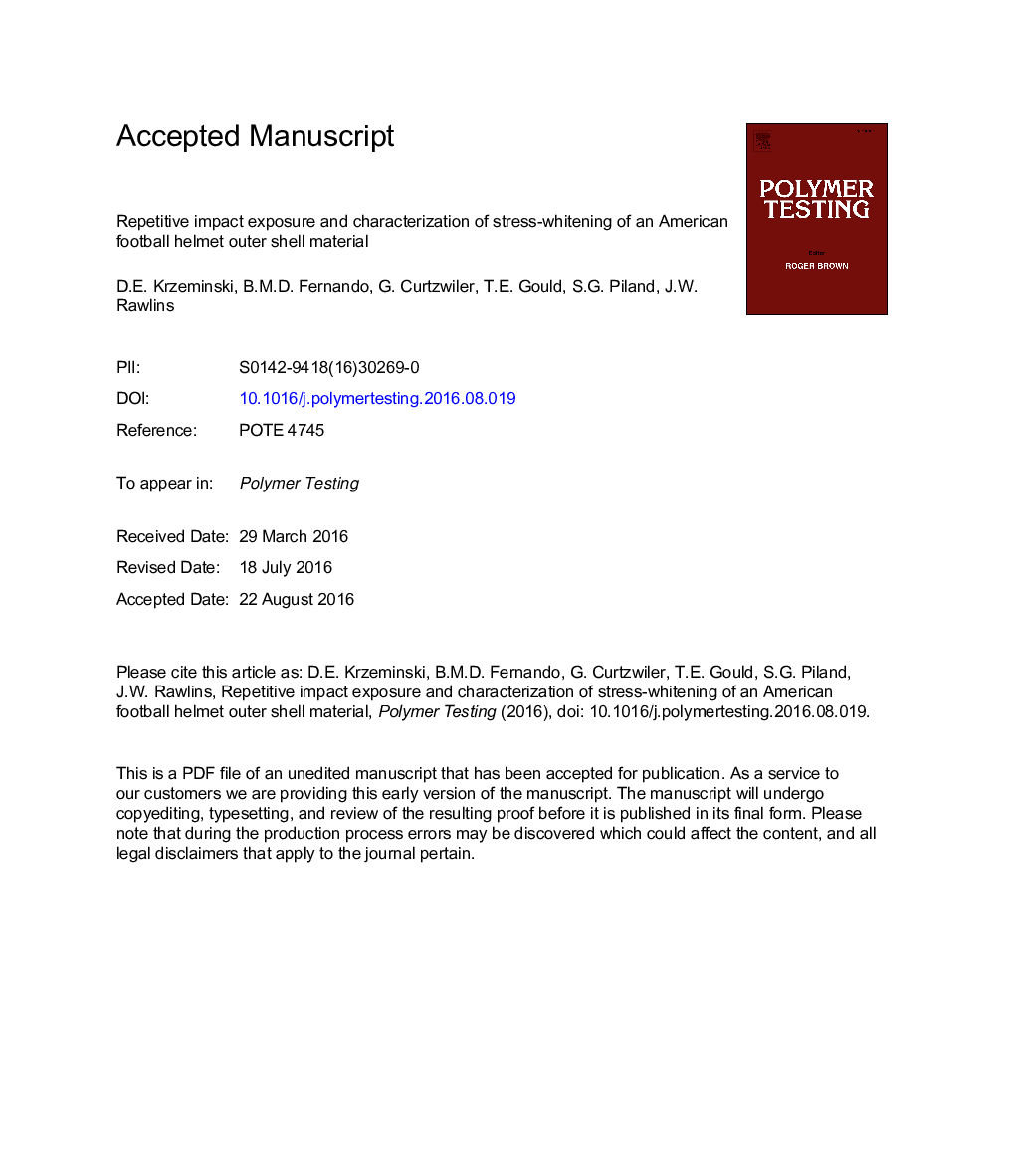| Article ID | Journal | Published Year | Pages | File Type |
|---|---|---|---|---|
| 5205804 | Polymer Testing | 2016 | 57 Pages |
Abstract
Mechanical stress exerted upon impact-modified polycarbonate (PC) and poly(ethylene terephthalate) (PET) blends has been reported to generate microscopic voids via rubber-toughener (RT) particle cavitation which can macroscopically manifest to visibly whiten the material. Previous work has revealed a whitening phenomenon in collegiate American football helmet outer shells after a single season and in helmet-grade plaques following linear impact testing. The purpose of this research was to quantify the effects of repetitive linear drop exposures on the (i) impact performance; (ii) physical and thermal properties; and (iii) surface and tensile mechanical properties of a stress-whitened American football helmet outer shell material. Statistically significant changes in plaque impact performance corresponded to substantial stress-whitening that penetrated up to 40-45% into the plaque thickness and elicited shifts in surface and tensile mechanical properties. Nanoscale microscopy revealed elongation of the PC/PET matrix and delamination at the RT-matrix interface. Thermal property analysis suggested the concomitant occurrence of RT cavitation and strain-induced PET crystallization. Overall, the research identified a battery of diagnostic tools to characterize material property changes of stress-whitening in rubber-toughened helmet outer shell materials.
Related Topics
Physical Sciences and Engineering
Chemistry
Organic Chemistry
Authors
D.E. Krzeminski, B.M.D. Fernando, G. Curtzwiler, T.E. Gould, S.G. Piland, J.W. Rawlins,
